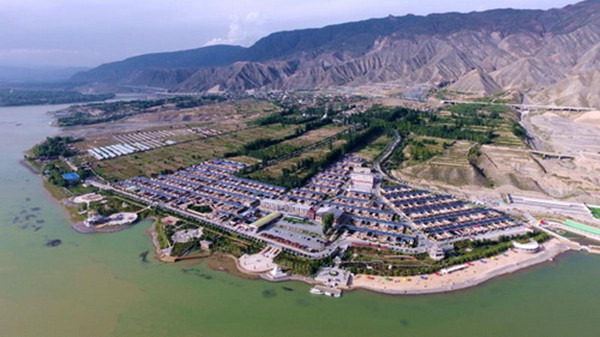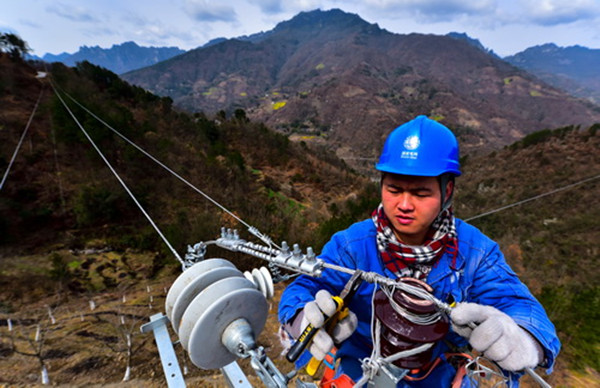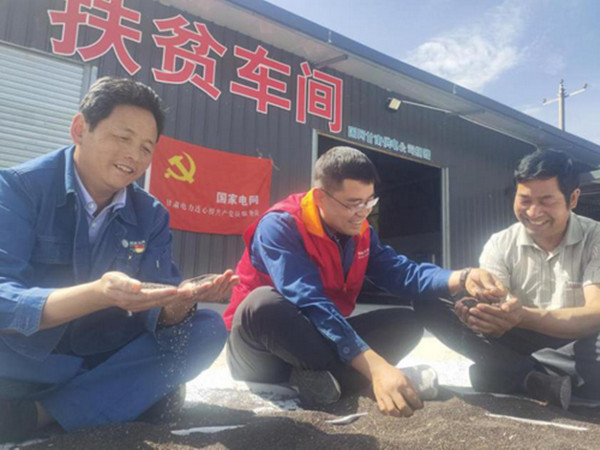State Grid in Full Swing in Supporting Poverty Alleviation in West China
2020 is a crucial year for the battle against poverty. State Grid Corporation of China (State Grid) has therefore strengthened power grid construction in poverty-stricken areas in West China by developing local industries and bringing in high technology.
The areas include the Tibet autonomous region and Tibetan areas in Qinghai, Sichuan, Gansu and Yunnan provinces as well as Hotan, Aksu, Kashgar, Kizilsu Kirghiz autonomous prefectures in Xinjiang Uygur autonomous region and Liangshang Yi, Nujiang Lisu and Linxia Hui autonomous prefectures in Sichuan, Yunnan and Gansu.
Promoting PV power projects
State Grid launched a series of photovoltaic (PV) power plants in villages in 2016. The power is sufficient and stable enough for daily home and commercial use in the villages and at the same time increases local incomes when sold to other regions.
For example, each poverty-stricken household can have 3,000 yuan annually in Heisongyi village in Gansu thanks to the power stations.
So far, the company has built 254 PV power stations in poverty-stricken areas to support regional collective economic development, develop local industries and create employment opportunities in these areas since the 18th CPC National Congress in 2012.
The power stations, with high standards and outstanding operational performance, are among the country's iconic PV power poverty-alleviation projects.
Enough and high-quality power guarantees prosperous industrial development.
Now, solar PV panels can be seen on the roof of every household in Deji village in Huangnan Tibetan autonomous prefecture in Qinghai, a new village and a new home to people previously living in impoverished regions without sustainable conditions.
Surrounded by mountains and rivers, the village is now a travel destination for tourists.
With the electrification renovation projects jointly launched by State Grid's subsidiary in Huanghua, Qinghai province, and the local government, each relocated household now has stable income of more than 4,000 yuan annually.
The relocated residents developed the tourism industry based on a model of cultural tourism, targeted poverty alleviation and rural vitalization, improving their annual per capita income to nearly 8,000 yuan. 251 households have been de-listed from poverty.

A view of Deji village, a newly-built resettlement area for people in impoverished regions with no sustainable conditions in Qinghai [Photo/sasac.gov.cn]
High-quality power leads to prosperity
In Xiaba county in Southwest China's Sichuan province, an extremely poor area located 3,800 meters above sea level, a black pottery workshop was established and more and more electrical appliances can now be seen in villagers' houses.
The changes are owed to construction and renovation of the power grid.
Similar development also occurred in Luoquanyan village in Sichuan.
State Grid's subsidiary in Guangyuan, Sichuan, completed a power grid project valued at 2.1 million yuan in July 2017, which included construction and renovation of a 2.9-kilometer 10 kV power line, five distribution transformers with total capacity of 450 kVA and a 6.5-kilometer 0.4 kV low-voltage power line.
The project improved total grid capacity by 4.5 times over the original capacity and also raised the power quality.
With access to reliable power villagers were able to build a special landscape of lotuses in high mountains to develop rural tourism, which attracts more than 50,000 visits annually. By the end of 2018, the annual per capita income was 10,065 yuan and the village officially de-listed from poverty.

A staff member of the power supply branch of State Grid's subsidiary in Guangyuan, Sichuan works on power grid renovation in Wuhong village. [Photo/sasac.gov.cn]
Sending staff members to villages
State Grid has sent more than 5,000 staff members to 1,952 target poverty-stricken areas, relieving poverty and improving local conditions by attracting investment.
Take Shangchuan village in Gansu for instance. The company helped the village attract investment and build a poverty-alleviation workshop where local people can produce vegetable oil for a living.
To promote industrial scale in Shangchuan the company invested 250,000 yuan this March in workshop expansion and road renovation.
Bee-keeping and carrot planting were also developed, which is expected to increase the revenue of village collective industries by more than 200,000 yuan.

Hao Guangping, an employee of State Grid, works at the poverty-alleviation workshop in Shangchuan village. [Photo/sasac.gov.cn]
Similar stories are also on stage in Southwest China.
Geze is one of the hardest-hit areas by poverty in Sichuan with 296 people of 57 households on the poverty-stricken list.
Thanks to State Grid's help, the village has so far developed various industries such as breeding sheep and growing chonglou (rhizoma paridis), chuanbeimu (unibract fritillary bulb) and baihe (lilium brownii), bringing in 1.59 million yuan.
State Grid will continue to contribute to China's rural vitalization, green development and energy security to empower areas to escape poverty and experience prosperity.
(Executive editor: Wang Ruoting)



